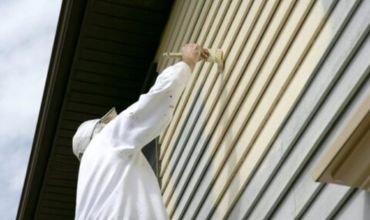If ignoring missed or damaged shingles is what you have been doing, you better watch your head. You have no idea what is coming for you if you don’t take care of those shingles ASAP! Damaged and missing shingles lead to leaks, water damage, and even costly repairs. Hope you don’t want that to happen to your foundation. Right? Or are you still thinking it is not a big deal? But hey, it’s high time you take action to protect your home or face the consequences that will eventually end up costing you much more time, money, and stress. Here is a comprehensive guide on how to replace missing shingles and prevent your roof from all those mishappenings.
To replace missing shingles, you need to first spot missing and damaged shingles. Here is how you can identify missing shingles and take action before any further damage occurs:

If not daily, but at least once a month, perform a visual inspection of your roof. This will help you spot any missing, damaged, or curling shingles early and prevent any potential leaks and costly repairs. Use binoculars to get a closer look and check for any gaps in the patterns of the shingles. Also, if you notice color differences or fading in certain areas, this could mean that the shingles have aged and may go missing any time soon.
Inspect your yard or gutters for any shingle debris. There are chances that missing shingles may leave behind a few pieces or granules to accumulate in these areas, especially after a storm. These leftovers can strongly indicate that shingles have started falling off and are all set to cause more damage if not addressed promptly.
If, in recent days, you notice any water stains or damp spots on your ceilings and walls. These can be signs of roof leaks, and you know the reason behind these leaks. Don’t you? It is the damaged or missing shingles that are leading to water leaks. Compromised shingles allow water to seep through your roof, resulting in those indoor stains and dampness.

Just like you will look for interior signs, you should regularly inspect your attic for early signs of roof issues. This includes inspecting the insulation for signs of water damage, such as wet or discolored areas or mold growth. Also, look for any spots where daylight is visible through the roof, as this can also prove that there are gaps or holes in the roofing material.
If any severe weather, such as heavy rain, strong winds, or hail has recently hit your area, it is important to check your roof for any damage. Why? It is not even a question to ask! Severe weather comes with serious risks to the integrity of your roof. Harsh weather can affect your shingles so bad that they become loose, damaged, or completely vanish, leaving your roof all alone with insufficient protection against the elements.
If you cannot identify the source of the problem on your own, it is time you schedule a professional roof inspection. Only they can save you from all the potential hazards and costly repairs. A qualified roofing expert has the necessary skills, tools, and experience to assess the condition of your roof thoroughly and spot hidden issues that may not be visible to you.
Understanding the reasons behind missing or damaged shingles can also help you take preventive measures to protect your roof and maintain its integrity. Here are some notable causes that leave your roof’s shingles with no option but to become loose, damaged, or completely disappeared:

While it is always advised to let the professionals handle the shingle replacement process due to the potential risks involved and the need for proper installation techniques, you can still replace missing shingles if you have the necessary tools and knowledge. Here is a guide to how to replace a missing roof shingle yourself.

Expenses involved in replacing shingles generally depend on several factors, which include the size of your roof, the type of shingle you choose to install, the complexity of the installation, and the labor cost in your area. Here is an overview of the potential costs:

After learning everything about how to replace missing roof shingles, what factors affect the cost, and how you can identify missing shingles, you are now well-prepared to protect your roof from damage. Most importantly, performing the replacement process can be challenging; always hire professional and experienced roofers to ensure the job is done safely and correctly. You can also trust ManageMyRoof to handle all your roofing needs. They offer expert services and a team of skilled professionals who make sure that your roof remains in optimal condition.
You can replace missing shingles only under safe conditions, using the proper tools and techniques. If you do not have enough knowledge, consider hiring a professional team of roofers.
Homeowners can spot missing shingles through various ways, including regular inspection, checking for shingle debris, looking for interior signs, checking your roof’s condition after a storm, and performing a professional inspection.
Common causes of missing shingles include strong winds, heavy rain, hail storms, poor installation, aging of the roof materials, and many others.
Replacing a missing or damaged shingle on your own is possible, but it might not be a good idea. It requires proper tools, safety precautions, and roofing knowledge that only a professional roofer possesses.
The cost involved in replacing missing shingles mostly depends on various factors, such as the size of your roof, the type of shingles, and the complexity of the job.
You must inspect your roof for missing shingles at least twice a year, ideally in the spring and fall. Also, consider inspecting your roof after a storm, as harsh weather can cause significant damage.
To prevent shingles from the damage, make sure you perform proper installation and use high-quality materials. This will also extend the lifespan of your roof.
Leave a Reply